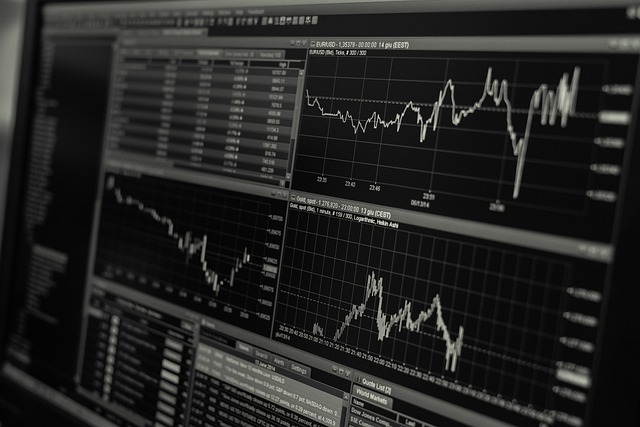Is Volume Important in Trading?
Author: Jameson Richman Expert
Published On: 2025-09-01
Prepared by Jameson Richman and our team of experts with over a decade of experience in cryptocurrency and digital asset analysis. Learn more about us.
In the intricate and dynamic realm of trading, the significance of trading volume cannot be overstated. It often acts as the unseen force behind price movements, providing crucial insights that can make the difference between a successful trade and a costly mistake. While many novice traders tend to focus primarily on price charts and technical indicators such as moving averages, RSI, or Fibonacci retracements, overlooking volume can lead to incomplete analysis and increased risk. Incorporating trading volume into your analytical toolkit allows for a more holistic view of the market, helping you assess the strength of trends, identify potential reversals, and validate breakouts with greater confidence. This depth of understanding enhances decision-making, reduces false signals, and ultimately contributes to more profitable trading outcomes.
Trading volume represents the total number of shares, contracts, or units exchanged during a specific period for a given security or market. It reflects the level of activity and investor interest at any moment, serving as a vital barometer for market participation. For instance, a significant price move accompanied by high volume signals strong conviction among traders and investors, often indicating the start or continuation of a robust trend. Conversely, a similar price change on low volume may suggest a lack of widespread participation, raising doubts about the move’s sustainability. Therefore, analyzing volume in conjunction with price action provides a more reliable framework for interpreting market signals, reducing the likelihood of acting on false breakouts or temporary spikes.

Why Is Trading Volume Important?
The importance of trading volume in market analysis extends beyond mere activity metrics; it functions as a predictor of future price behavior and a validation tool for technical signals. The adage "volume precedes price" encapsulates the idea that shifts in volume often occur before significant price movements, offering traders an early warning system. High-volume surges during key points—such as breakouts, breakdowns, or trend reversals—usually confirm the strength of these moves, thereby reducing the likelihood of false positives. Moreover, volume analysis aids traders in distinguishing between genuine trends and ephemeral price fluctuations often caused by low liquidity or fleeting market noise. Recognizing these nuances is essential for developing resilient trading strategies that can adapt to different market conditions and prevent costly mistakes.
Volume as a Confirmation Tool
One of the core functions of volume analysis is trend confirmation. Uptrends accompanied by rising volume suggest strong buying interest, reinforcing the trend's sustainability. Conversely, if prices rise but volume declines, this divergence signals weakening momentum, potentially foreshadowing a reversal or consolidation. The same principle applies to downtrends: high volume during declines confirms sellers’ dominance, while declining volume during a decline may indicate a lack of conviction and a potential reversal. Additionally, volume spikes during pullbacks or retracements can serve as indicators of potential exhaustion, signaling traders to prepare for reversal signals. Traders utilize this confirmation to filter out weaker signals, increase the probability of successful trades, and avoid premature entries, making volume an integral part of technical validation frameworks.
Detecting Market Reversals
Volume analysis is especially invaluable in spotting potential market reversals, often before they become evident on price charts. A common reversal indicator is a spike in volume at the end of a prevailing trend, signaling exhaustion of the current move. For example, in an uptrend, a sudden surge in volume combined with a price pause or slight reversal might indicate that buyers are reaching their limit, and sellers are preparing to step in. Technical tools such as volume climaxes, divergences between volume and price, and volume oscillators like the Volume Weighted Average Price (VWAP) help traders quantify these signals. Recognizing these reversal cues enables traders to position themselves proactively, minimizing losses and capturing potential trend changes before they fully materialize. Furthermore, advanced analysis includes studying volume divergence—where price makes new highs or lows but volume fails to confirm—indicating weakening momentum and potential reversals.
How to Use Volume in Trading Strategies
Successfully integrating volume into your trading strategy involves leveraging various volume-based indicators and interpreting their signals within the broader market context. Popular tools include the On-Balance Volume (OBV), which accumulates volume based on closing price direction; the Volume Price Trend (VPT), which combines price change and volume to gauge buying and selling pressure; and the Chaikin Money Flow (CMF), which measures the flow of money in and out of an asset, indicating accumulation or distribution phases. These indicators help traders identify divergence patterns—such as a new high in price not confirmed by OBV—suggesting a weakening rally or an impending reversal.
For example, divergence between OBV and price can signal an impending reversal; if price makes a new high but OBV fails to confirm, it suggests weak buying pressure. Similarly, volume spikes during breakouts above resistance or below support levels serve as confirmation of the move’s validity, often leading to sustained trends. Combining these tools with candlestick patterns, trend lines, and other technical indicators enhances the robustness of your trading decisions by providing multiple layers of validation and reducing the risk of false signals. Moreover, incorporating volume analysis into multi-timeframe analysis can unveil hidden confirmations that are not visible on a single chart timeframe, adding depth to your decision-making process.
The Role of Liquidity and Order Book Dynamics
Beyond traditional volume measures, understanding liquidity and order book dynamics has become vital, especially in fast-moving markets such as cryptocurrencies and foreign exchange (FX). Liquidity refers to how easily an asset can be bought or sold without significantly impacting its price. High liquidity, characterized by tight bid-ask spreads and deep order books, ensures that large trades can be executed with minimal slippage, preserving the integrity of your analysis.
Order book data—showing real-time bid and ask prices, sizes, and order flow—provides a granular view of market sentiment. For example, a thick order book with substantial buy orders at specific levels can act as a support zone, while heavy sell orders may indicate resistance. Monitoring order book imbalances, such as sudden withdrawals or additions of orders at certain levels, can signal short-term moves driven by order flow dynamics. This insight allows traders to gauge the intent of institutional players and high-frequency traders, who often operate on order book signals rather than traditional volume metrics alone.
Leading platforms like Binance, MEXC, Bitget, and Bybit offer sophisticated tools that display live order book data, empowering traders to identify liquidity-driven moves and improve their entries and exits. These advanced tools, combined with volume analysis, enable a comprehensive approach to understanding market microstructure and anticipating rapid short-term movements.

Risks of Ignoring Volume in Trading
Neglecting volume analysis exposes traders to considerable risks, including false breakouts, whipsaws, and entering trades based on weak or misleading signals. For example, executing a trade solely on a price breakout without confirming high volume may lead to rapid reversals once the initial move exhausts, trapping traders in losing positions. Such scenarios can erode confidence and capital. Additionally, ignoring volume can cause traders to miss vital clues about trend strength, potential reversals, or market exhaustion, thereby increasing overall exposure to unpredictable volatility, slippage, and adverse price gaps. Without volume confirmation, traders might also fall prey to manipulative practices like stop hunting or pump-and-dump schemes prevalent in less regulated markets.
Proper volume analysis acts as a safeguard, helping traders filter out noise and avoid these costly pitfalls, especially in volatile markets where false signals are rampant. Combining volume with other indicators such as volatility measures, market breadth indicators, and macroeconomic data can further strengthen your trading framework, making it more resilient against unpredictable market shocks.
Conclusion
In summary, trading volume is an indispensable component of successful market analysis. It provides invaluable insights into market strength, liquidity, and potential reversal points, serving as a confirmation tool that enhances the reliability of price signals. When combined with other technical indicators, order book data, and macroeconomic factors, volume analysis creates a comprehensive trading approach that improves timing, risk management, and profitability. Whether trading stocks, forex, commodities, or cryptocurrencies, understanding and applying volume analysis elevates your trading from mere guesswork to strategic decision-making. Markets characterized by high liquidity and genuine volume tend to offer more opportunities and less risk of false signals—making volume an essential part of every trader’s arsenal for sustained success and growth.